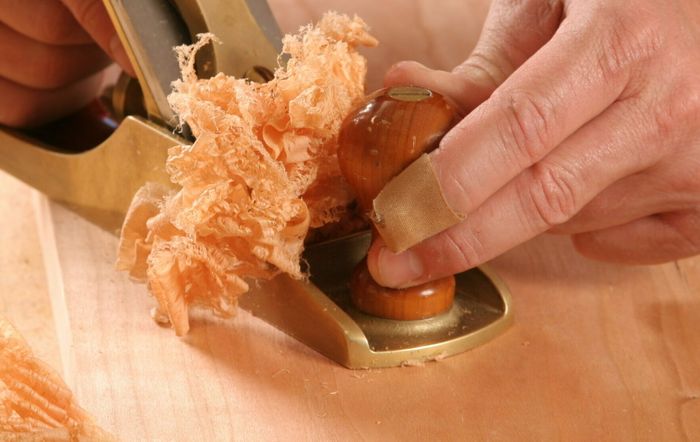How to Sharpen a Spokeshave
A simple blade holder is a key to success.

Synopsis: Sharpening a spokeshave blade can be tricky because the small blade is hard to hold. The solution is to mount the blade in a wooden holder before you grind and hone it. This version by Chris Gochnour can handle both short bevel-up blades and longer bevel-down blades. It’s a style of shopmade holder that’s been around for more than a century, but Gochnour has updated it and made it more user-friendly.
Sharpening most spokeshaves is like sharpening a handplane, but the blades are a lot smaller and tricky to hold. The solution is a wooden blade holder. With the blade mounted in it, you can grind and hone to perfection using standard sharpening techniques. It’s also double-ended, so it can handle both short bevelup blades and longer bevel-down blades. a concave spokeshave requires a different approach, but I’ll tell you the secrets to that, too.
Make the blade holder
I first discovered this style of blade holder when reading about spokeshaves in a reprint of a book written in 1903—The Handyman’s Book by Paul Hasluck (2001, Ten Speed Press). Traditionally the blade is wedged into the holder’s wooden body, but I added screws and wingnuts to hold the blade and glued a steel washer to the top so that I could stick on a magnetic angle gauge. I also cut different-size slots into each end so that I could sharpen 11⁄2-in. long bevel-down blades, and shorter bevel-up blades too.
Making the blade holder is simple. Mill a piece of hardwood to size and cut a slot in each end, 11 ⁄2 in. deep and as wide as the blade it will hold. In my case, a 1 ⁄8-in. slot worked well, but if your spokeshave blade is thinner, you may want to cut the slot with a thin-kerf blade. I cut the slots using a tenoning jig on MAKE THE BLADE HOLDER the table-saw. next, to create clearance for grinding and honing the bevel, tilt the blade to 25° and cut a bevel on the underside that rises about 5 ⁄32 in. on each end. Drill and countersink holes for the two clamping screws in each end. The screws will also serve as a depth stop to keep the blade square with the holder, so make sure they are parallel with the ends. To allow the top half of the slots to tighten freely under the wingnuts, change to a drill bit slightly larger than the screw threads and red-rill the holes on the top side of the holder. a fender washer mortised into the top creates an attachment point for a magnetic angle gauge. Drill the shallow washer mortise in the center of the top, then glue it in with cyanoacrylate glue.
For the full article, download the PDF below:
Fine Woodworking Recommended Products

Bahco 6-Inch Card Scraper

Veritas Precision Square

Veritas Wheel Marking Gauge








Comments
Would like to know what size screws were used in the project. It is not listed.
Log in or create an account to post a comment.
Sign up Log in